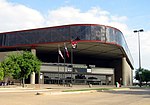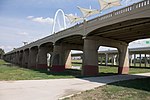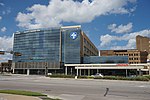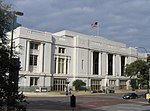Margaret McDermott Bridge
Bridges by Santiago CalatravaBridges completed in 2017Bridges in DallasBridges on the Interstate Highway SystemCable-stayed bridges in the United States ... and 6 more
Interstate 30Neo-futurism architectureRoad bridges in TexasSteel bridges in the United StatesThrough arch bridges in the United StatesUse mdy dates from March 2018
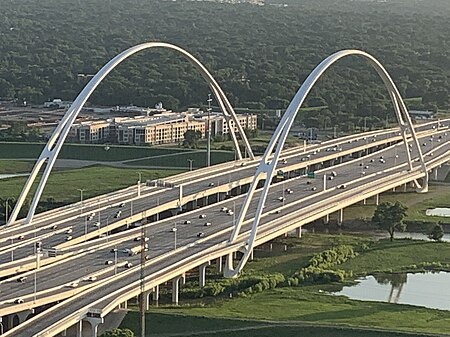
The Margaret McDermott Bridge is a conventional concrete pier-and-beam freeway bridge with cable-stayed bike lines over the Trinity River in Dallas, Texas. It replaced the late-1950s to early-1960s Interstate 30 (I-30) bridge, which reached its end of life. It was partially designed by Santiago Calatrava, and is part of the Trinity River Project and the Horseshoe Project. It was named for Margaret McDermott, an area philanthropist.
Excerpt from the Wikipedia article Margaret McDermott Bridge (License: CC BY-SA 3.0, Authors, Images).Margaret McDermott Bridge
Margaret McDermott Bridge, Dallas
Geographical coordinates (GPS) Address Nearby Places Show on map
Geographical coordinates (GPS)
| Latitude | Longitude |
|---|---|
| N 32.770388888889 ° | E -96.8185 ° |
Address
Margaret McDermott Bridge
Margaret McDermott Bridge
75260 Dallas
Texas, United States
Open on Google Maps


